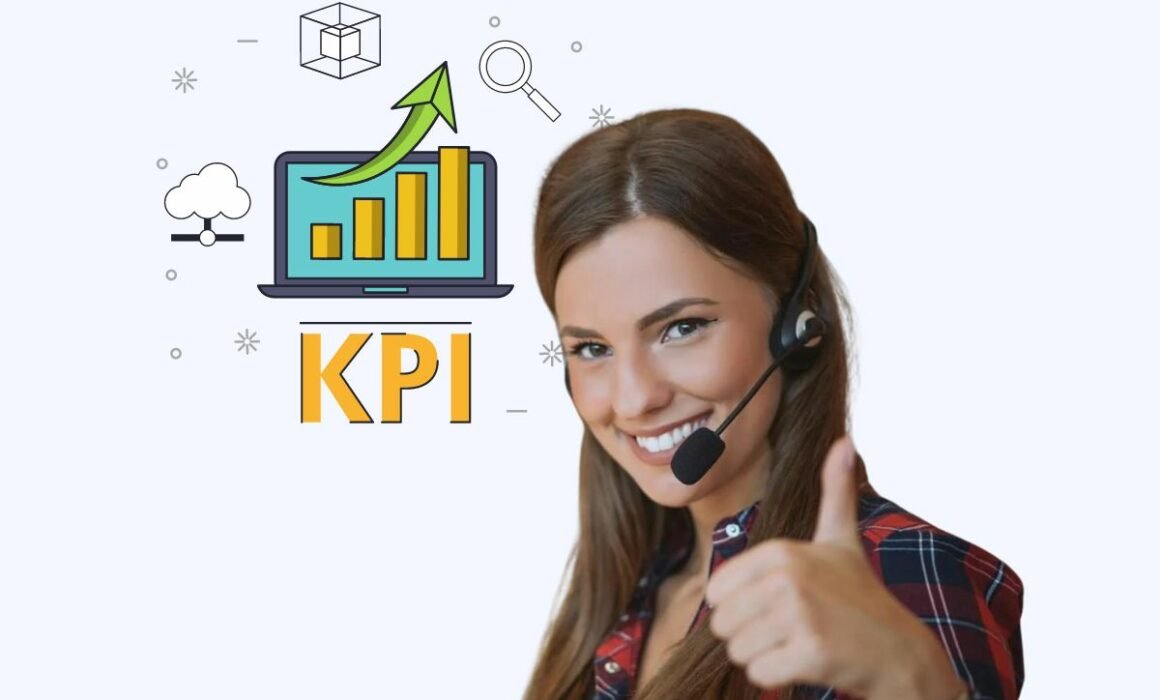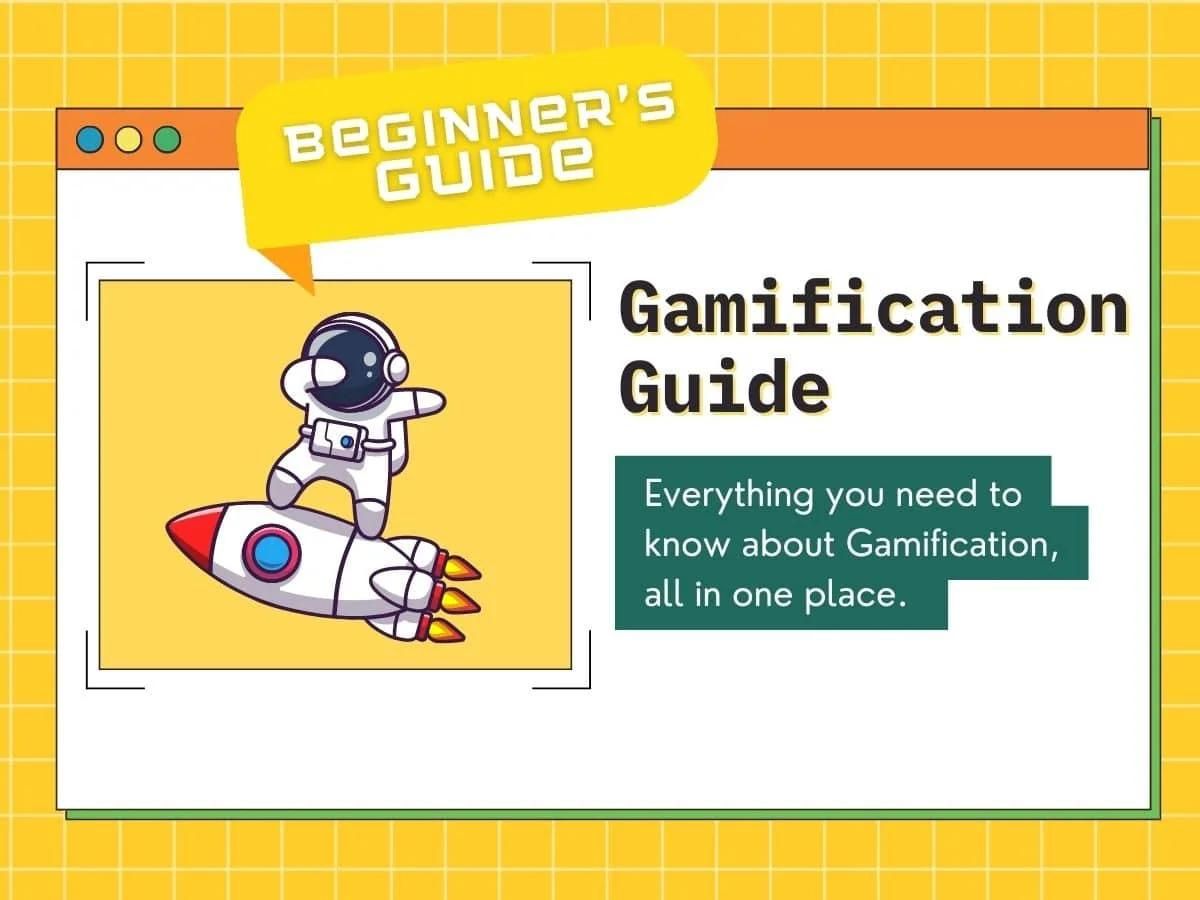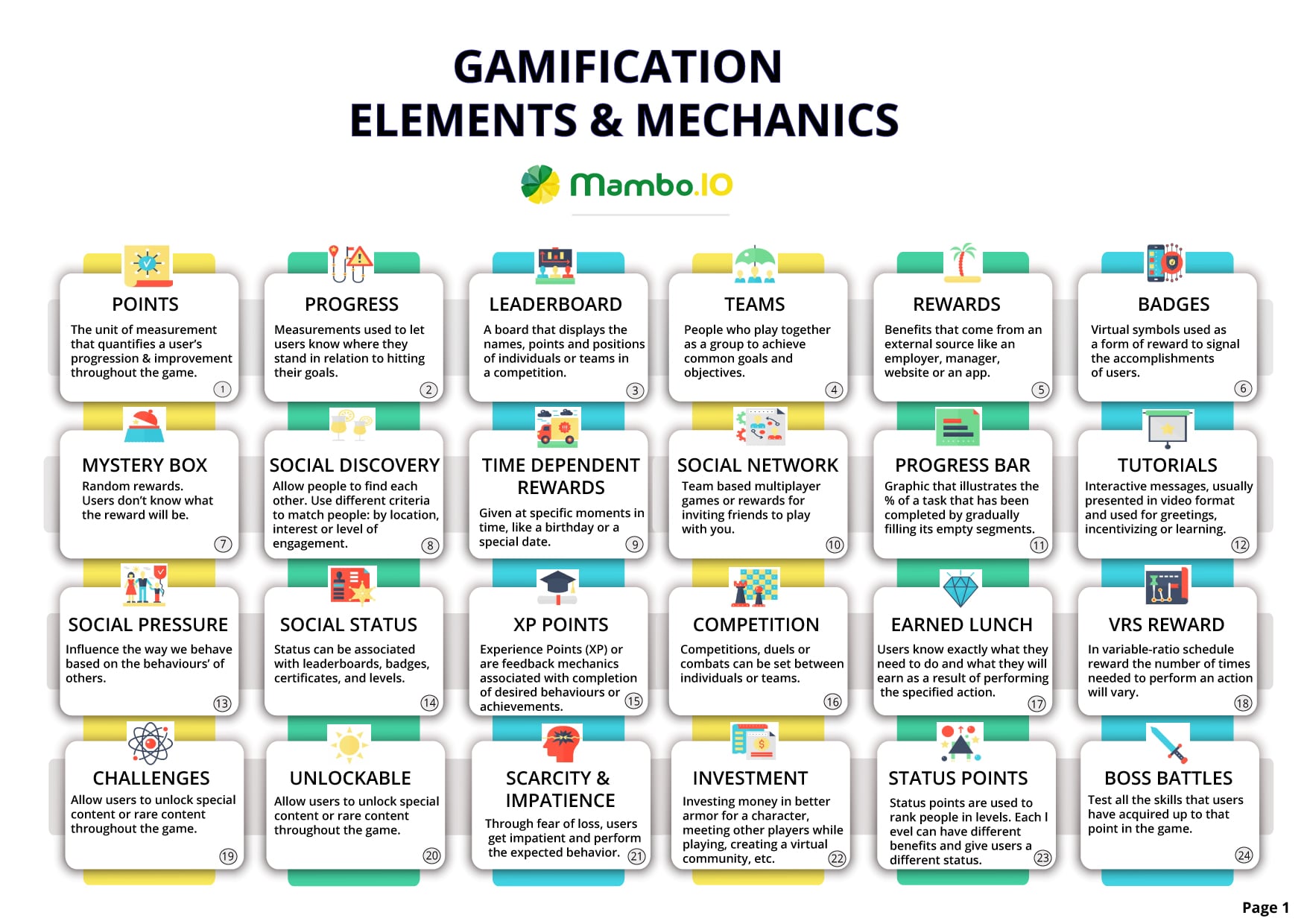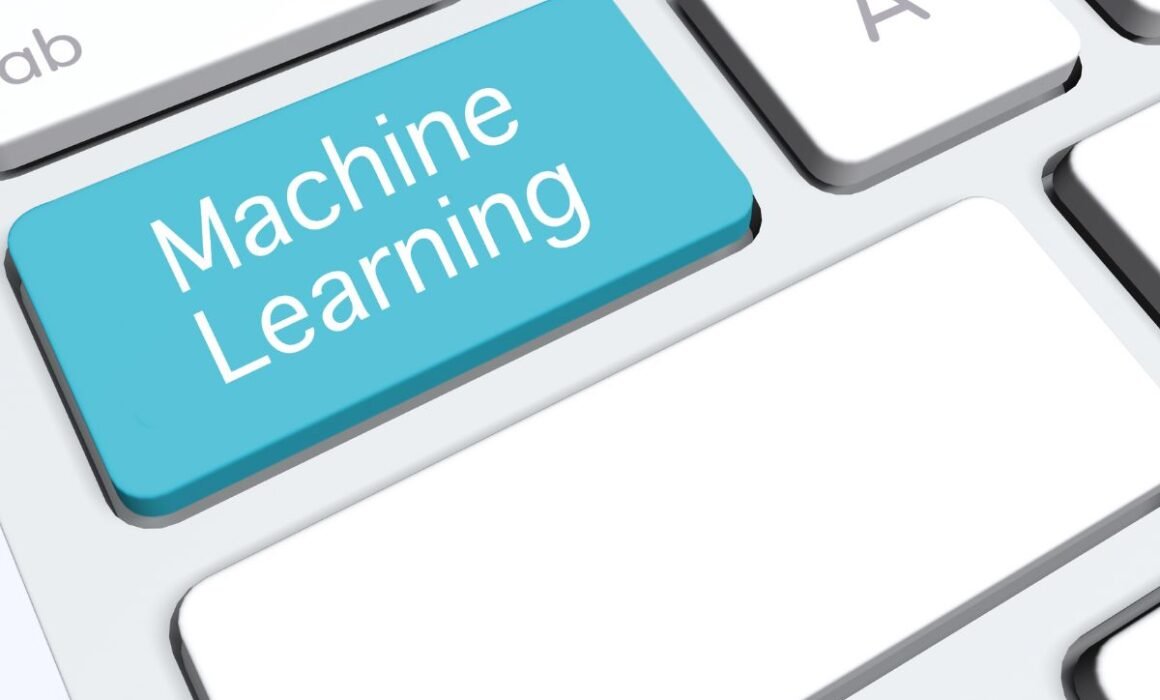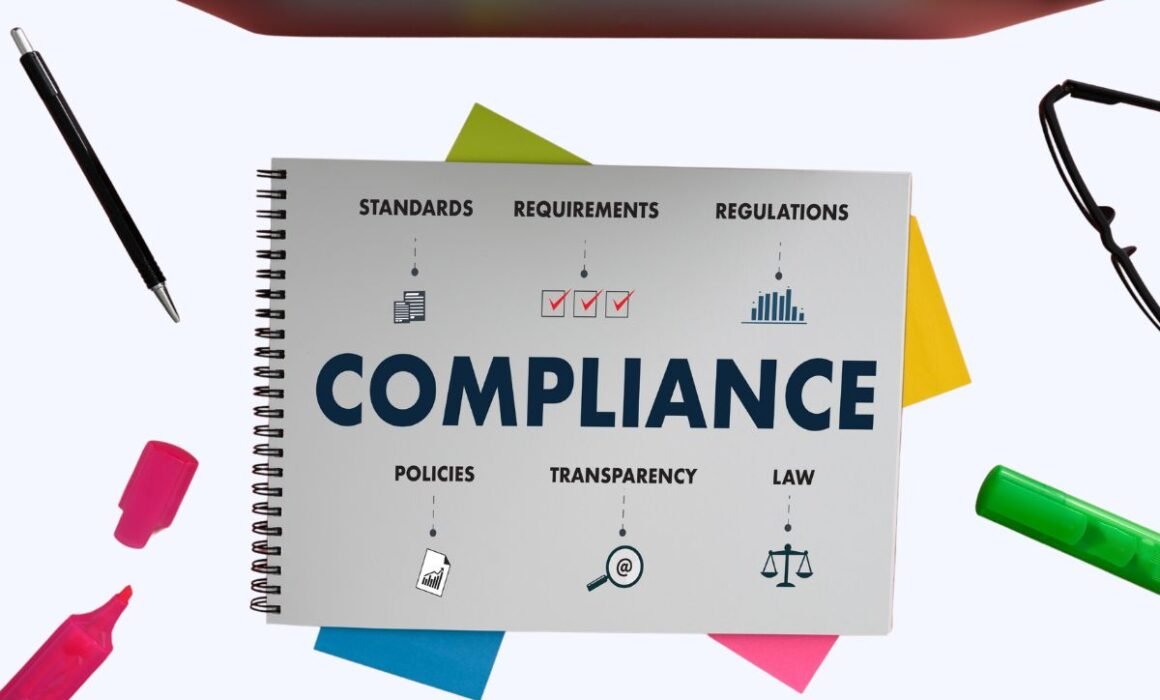Improving Contact Center Performance Using Gamification
Remember the good old days when setting up a contact center was as easy as herding cats in a thunderstorm? Ah, those were the times! But hold onto your headsets, folks, because we’ve zipped from the Stone Age to the Space Age in a mere ten years. Now, we’re not just talking about making onboarding and training as smooth as a jazz playlist; we’re diving deep into tailor-made key performance indicators (KPIs) with the precision of a cat stalking its laser-pointer nemesis.
Casting our minds back to our last rollicking adventure through the world of gamification in contact centers, we’re about to double down on the fun. In this article, We’re embarking on a thrilling exploration of how learning, habit-forming, and, let’s not forget, the sheer joy of gamification can give your KPIs caffeine-level energy.
Table of Contents
- What exactly is gamification?
- How can gamification provide a behaviour change?
- How does gamification turbocharge contact center performance?
- What’s the importance of rewards and spiffs in contact center sales gamification?
- How can gamification be used to boost contact center sales performance?
- How can gamification be used to enhance contact center customer retention?
- What is microlearning and how can it help my contact center performance?
- What are the most critical KPIs to gamify and increase contact centre performance?
- What are the benefits of gamification in call centers?
- Tips to set up a gamification strategy to boost your contact center performance
- What are the factors that influence the effectiveness of call center gamification?
- Closing thoughts on contact center gamification
- Machine Learning In Finance: 12 Essential Applications
- How To Create Interactive Compliance Training For Bank Employees
- How Fintech Apps Are Using Gamification To Increase User Engagement
Download your free
“Gamification Guide”
Get your PDF now and start transforming your approach to digital engagement!
What exactly is gamification?
Imagine if completing a survey, taking a nature walk, or even practising a new language could earn you points, like earning badges and points in a video game.
Gamification is like turning the things you have to do into a game. You can earn points, get badges, or even level up for doing your tasks well.
It makes doing regular things a little more fun because you get rewards just like you do when you’re playing your favourite video game. So, it’s a way to make not-so-exciting tasks feel like an adventure or a challenge you want to win.
How can gamification provide a behaviour change?
Ever caught yourself doing something without even thinking about it? That’s the power of habit for you. Astonishingly, nearly half of our daily actions are habitual. But here’s the kicker: habits can be good, bad, or just meh. Today’s mission? We’re zeroing in on crafting top-notch habits to boost the contact center.
The stages of habit
Embarking on this journey, you’ll need three trusty companions:
- A cue: Consider this a gentle nudge to your brain, signalling it’s go-time for an action.
- A routine: The actual action sequence, executed at a set, predictable time.
- A reward: The sweet, sweet payoff you get right after doing the deed.
That’s essentially all it takes. Once you’ve made a habit, you’ll go through the four stages. You’ll see the cue, crave the action, do the action and reap the reward.
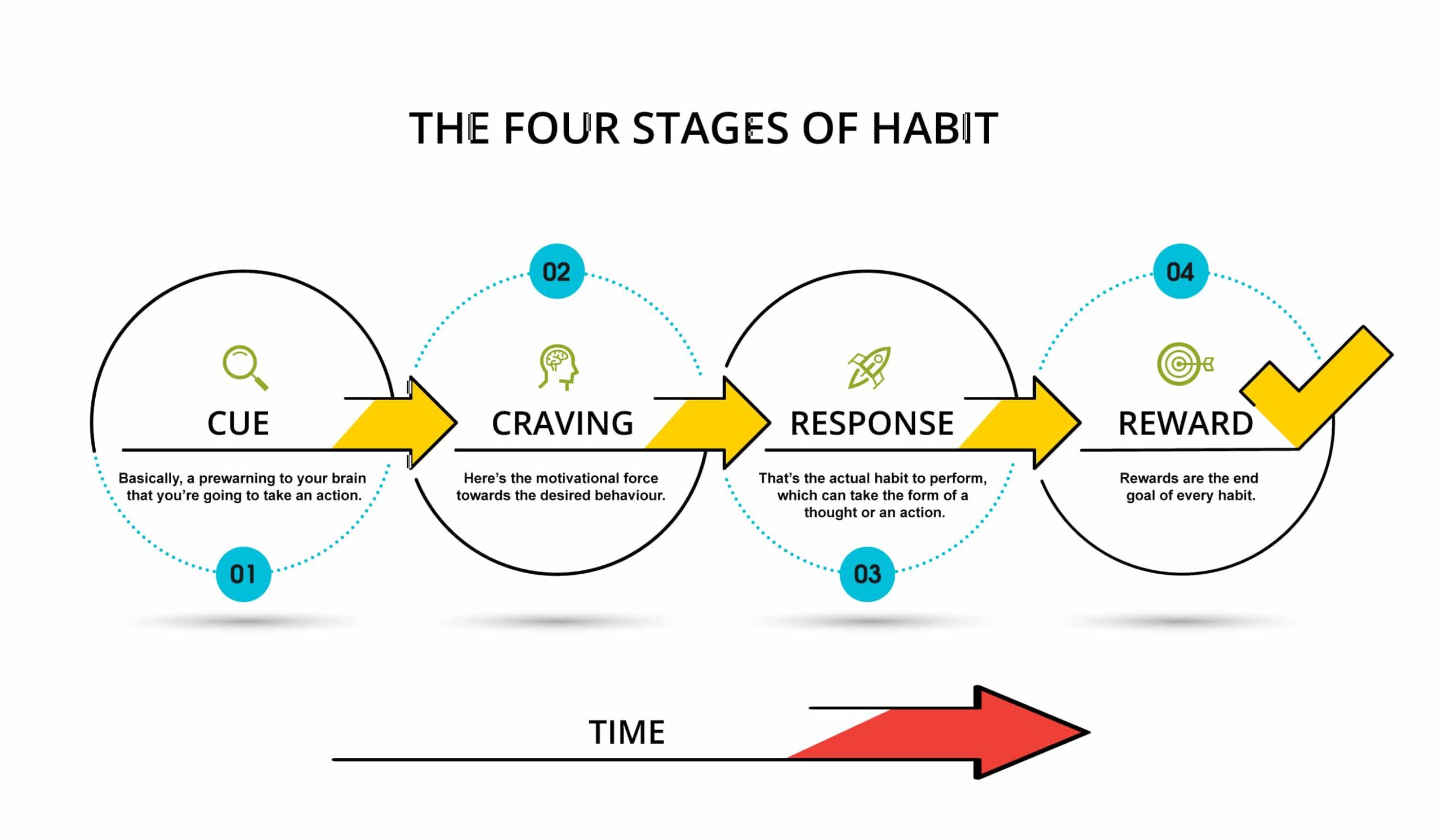
But wait, there’s more. This whole habit thing? It’s like your favourite binge-worthy series: cyclic and addictive, given that 45% of your doings are habitual repeats.
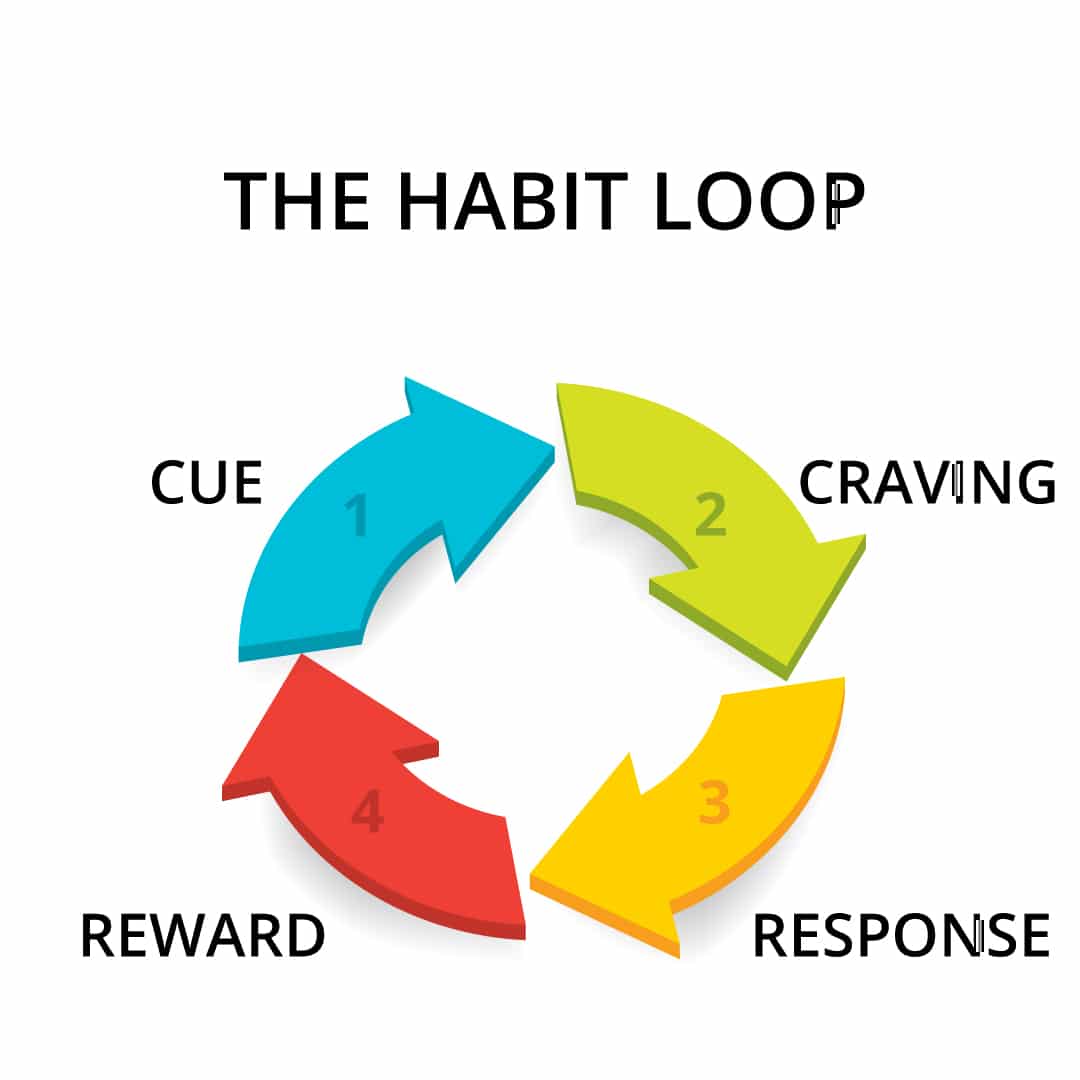
But, how can gamification help create better habits, especially to help with contact center performance?
Well, it all starts with a cue. Each day, agents log into their dashboard and they see all the exciting challenges they can complete. This creates the craving.
They know they’ll get a shiny badge or other reward if they complete the tasks. They eagerly jump on the opportunity. Progress bars and experience points reinforce that they are doing a good thing.
Once they achieve their goal, the reward is instant and public. Everyone can see they’ve been successful. This is positive and strong dopamine-inducing feedback. This fuels the cycle to begin again with another task, and another.
So, let’s spice things up with a couple of head-scratchers:
Download your free
“108 Gamification Elements and Mechanics”
Get your cheat sheet and have a quick reference at your fingertips!
How does gamification turbocharge contact center performance?
Studies have thrown us some eye-popping stats: introducing gamification can skyrocket employee engagement by up to 50%, catapult performance metrics by 40%, and boost customer satisfaction faster than you can say “Jack Robinson” – or so the reports claim.
How come?
Picture this: agents clock in daily to find a dashboard peppered with enticing challenges. It’s like finding a treasure map where X marks the spot for cool badges and bragging rights.
This visual feast serves as the perfect cue, igniting a craving for action. Agents dive into tasks with gusto, their progress highlighted by experience points and progress bars cheering them on.
The climax? Achieving goals and basking in an instant, public glory sparks a feel-good dopamine rush. And just like that, they’re revived for the next challenge, perpetuating a cycle of positive, productive habits.
In contact centers, gamification isn’t just a game—it’s the playbook for building a winning team, one habit loop at a time.
What’s the importance of rewards and spiffs in contact center sales gamification?
Historically, SPIFFs or SPIVs were used to reward sales agents for closing deals. Agents would get a tasty little cash bonus for every sale.
It was immediate and tangible. And we still do this today, but the delivery method has changed.
Now, reloadable debit cards, gift cards, merchandise, and travel vouchers are the most common SPIFFs. The reason why they’re still used is because they’re effective.
Offering little bonuses enables an organisation to shift old stock faster, sell more lucrative lines, woo customers to new launches and achieve time-sensitive sales goals.
However, many companies have started relying on SPIFFs as their primary incentive. That’s not their intended purpose.
Oh, and if your team is untrained or under-motivated, they won’t do much good either. SPIFFs are meant to reward extraordinary results or trigger additional sales.
They’re not the best option for day-to-day performance benchmarks. Where they do excel is as bonus quest rewards.
Imagine the scene:
You have a week to hit your Q3 sales targets. The team is performing well, and you’re very close to achieving record sales for your client. You activate a SPIFF bonus quest that offers a tenner in virtual gift cards for every additional sale after quota.
They’re off to the races. You hear the frantic excitement on the floor. With each sale, a notification goes off, the agent has unlocked a SPIFF. Sales rapidly start to mount. By the end of the week, you’ve smashed your target. That’s the power of small, incremental bonuses.
How can gamification be used to boost contact center sales performance?
Now, what about your baseline performance? SPIFFs are great, but they’re not supposed to be the only reward system in place. That’s where a full programme of call center gamification comes in. You can divide your requirements into two key areas:
1. Onboarding & training
Implementing gamification that gets your new hires up to speed, arms them with the tools needed to complete daily tasks and shows them how they’re performing against experienced agents to provide coaching opportunities.
2. Performance tracking & analysis
These gamification elements allow senior management to forecast and report on how the operation is running. You’ll want to configure all your KPIs into the system and link your dialler and CRM for the most robust results. If that sounds daunting, don’t worry. We can help.
Remember, when setting a structure and configuring gamification, you must address Maslow’s Hierarchy of Needs. You won’t provide enough stimulation to keep your team motivated and performing if you don’t.
Gamification draws highly on behavioural psychology like Maslow’s to provide a sense of safety, belonging, esteem and self-actualisation.
This handy chart gives a glimpse into how these elements stack up:
Laid out this clearly, you can see how the different gamification elements interact. You provide the tools and make sure they’re all fit for purpose. That’s safety. You run fun challenges, reward top performers publicly and include collaborative elements.
That’s belonging and esteem. Then, you give your agents the chance to contribute. To make the operation better, faster and stronger. And you reward them for doing so. That’s self-actualisation.
Gamification taps into deep-seated, universal and primal needs to provide a more engaging way to fulfil them.
Best of all, you get to watch it all happen. With coaching, your management team can identify stragglers and bring them into the fold. You can report to shareholders and stakeholders more meaningfully – with actionable insights. You’re reinforcing a clear message because you’re rewarding attempts and success.
How can gamification be used to enhance contact center customer retention?
When the higher needs of your team are met, the culture improves. Yes, there’s still competition but that’s ancillary. The main focus should always be on collaboration.
On working together to make each other’s working life better. We’ve talked before about how rewards for contribution to a knowledge base and the helpfulness of that addition is effective at creating collaboration.
There are. But have you thought about the benefit gamification could have on your customers too?
Think about it. Your customers are a very valuable asset. They know your brand and products.
They have opinions, and often, they’re happy to share. But they might need a little push to do so. Wouldn’t they enjoy a fun challenge where they can provide feedback in exchange for badges and rewards?
If you’d happily leave a review to collect a little coupon, your customers would likely, too. What if you could create a custom avatar and connect with other buyers on a private forum to share tips and product knowledge?
Would you do it? You’d probably feel pretty important. Certainly not a faceless, nameless consumer… a valued customer.
Just as gamification leads agents to provide better customer service, the same is true for consumer-facing gamification and its positive impact on profits.
What is microlearning and how can it help my contact center performance?
Gamification in contact center environments isn’t restricted to the sales team. Nor should it be. It can help you to onboard new agents quickly and easily through microlearning.
Now, microlearning doesn’t mean learning less. It’s about learning in bite-size segments. Microlearning makes hard topics more digestible. It can also lead to a culture of continuous improvement.
Gamification is really helpful in delivering microlearning. You can segment learners into groups and create healthy competition with immediate rewards.
Content is delivered during fun levels, not with stacks of boring manuals. Every word, every image and every goal is designed to showcase the brand values, product benefits and teach key info.
Every time they successfully complete a module, they get that all-important dopamine hit, plus a shared sense of accomplishment with their team.
But even struggles are effective. Any levels with a high failure rate provide an opportunity for one-on-one coaching.
But training doesn’t have to stop at onboarding week.
Gamification allows agents to complete additional training sessions for badges, points and rewards. This is a great way to deliver information about system and product updates or corrective educational modules.
In real time, managers can see who has completed the training, how they performed and their scores. In that way, the whole agent pool is kept up to speed with developments, ongoing.
What are the most critical KPIs to gamify and increase contact centre performance?
What gets measured, gets managed. You’ve probably heard that before. As the world moves to a more data-centric orientation, contact centers need to focus more on metrics. Think about your key business goals. For each organisation and business, they will be a little bit different. Your clients will have different needs and so will your stakeholders. Setting metrics is not a one-size-fits all activity. What activities and elements contribute to positive growth in those goals? Drawing a blank?
Critical KPIs for Contact Center Performance
Here are some critical KPIs for contact center performance to jog your memory:
- Call quality – how accurate was the information provided by the agent?
- First call resolution – was the customer’s query solved on the first call?
- Handle time – how long does it take for the query to be resolved?
- Answer speed – how long until the call is picked up?
- Timeliness – are your agents back from breaks and logged in on time?
- Service level – how many calls are picked up within agreed time limits?
- Wrap time – how much time is spent recording notes on the account or doing other admin tasks?
- Occupancy rate – what percentage of an agent’s shift is spent handling calls?
- Satisfaction – how happy are your customers with the service they receive?
- Retention rate – what percentage of agents and customers remain with your organisation month on month?
- Call volumes – how many calls can each agent handle per day?
- Transfer rates – how many calls needed additional support
What are the benefits of gamification in call centers?
- Training delivered in engaging, bite-sized segments.
- Autonomy in selecting daily tasks, enhancing self-direction.
- Goals that offer valuable performance statistics and contribute to business growth.
- Encouragement of both competition and collaboration on team objectives.
- Opportunity for peer-to-peer recognition, boosting engagement and motivation.
- Real-time, consistent, and personalized feedback on performance.
- Achievement rewards that offer a dopamine boost and are celebrated team-wide, fostering a positive work culture.
Tips to set up a gamification strategy to boost your contact center performance
#1. Give them something to lose.
Right away, start them off with a badge. Maybe it’s a daily active login badge. Let them know if they don’t log in each day during their shift, it will disappear. This taps into a deep psychological need to avoid loss. Reset stats at the end of each quarter. Have unexcused absences clear out progress. Essentially, you need to create a higher-stakes setting.
#2. Give them something to win, personally.
Set individual targets and leaderboards for your key metrics. Reward agents with the fastest, most accurate call-handling times. Add a bonus for a great customer review score. Get them invested in the game at a personal level.
#3. Give them something to build together.
Create collaborative targets and projects. Maybe it’s a knowledge base or an updated training programme. By giving rewards for working together, the whole company culture is elevated.
Ideally, you’ll want to use all of these mechanics to create a robust gamification strategy for your operation. But you don’t have to roll them out all at once. Add pieces to the puzzle over time if you’re in a test and learn phase. As long as you start somewhere, you can always optimise as you gather learnings on usage, adoption and results.
What are the factors that influence the effectiveness of call center gamification?
First off, agents who are already checked out mentally will not benefit from gamification. They’re too far gone and it’s best to allow them to make an exit from your organisation. As new hires come in, you can bed in the concept from day one with your onboarding. That way, they’ll be excited for further gamification when they’re on the floor.
Key factors for gamification success
Okay, so assuming your team is keen, here are the key factors that will lead to gamification success in your contact center:
- Robust Reporting – Your existing systems need offer robust reporting. If you’re not already tracking your key metrics, there’s nothing to gamify. Make sure you have a good foundation.
- Public Stats – Keep it all above board. The leaderboard for every single challenge should be public. This helps agents feel the competition is fair.
- Healthy Rivalry – Keep the competition friendly. It doesn’t always have to be 1v1 leaderboards. Think about team challenges and department goals too. Always encourage agents to play nice.
- Go Quantitative – Numbers are honest. Skip wishy washy qualitative scores. Always gamify with cold, hard facts.
- Management Matters – Bring in management. Make sure that managers reward and coach based on the progress within the game. This raises the stakes in a healthy way.
- Rewarding Culture – Allow for incremental wins. Don’t just reward the top 3 scorers. Think about ways to include everyone who was wholeheartedly participating.
- Target Integrity – Punish the cheaters. Don’t allow dishonest practices to crop up. Anyone tampering with the integrity of the challenges should be dealt with swiftly.
- Onboard Success – Keep churn rates down when you onboard thoughtfully and give new hires a boost on their competition.
- Keeping a healthy, competitive environment – where everyone has the same chance of success will motivate agents to try and achieve every day. You’ll see less turnover.
Closing thoughts on contact center gamification
Perhaps some of your best agents are now disengaged, a situation worsened by a lack of motivation and fun in their tasks. Recognizing the impact of gamification on retention, engagement, and customer satisfaction might stir some regret. It’s okay to feel that way, but it’s crucial to act now. Implementing gamification can rejuvenate your team, meet their needs, and create a vibrant community for your customers, repairing past neglect.
Launching a gamification initiative can significantly enhance your next fiscal year, bringing immense benefits and a culture you can be proud of.
Ready to transform your contact center? Our team is eager to assist you in getting started or answering any questions. Book your free demo!
Latest Posts
Machine Learning In Finance: 12 Essential Applications
The impact of machine learning on finance is significant. Thanks to this technology, financial institutions are now equipped to make efficient decisions. Through the analysis of data sets, machine learning […]
How To Create Interactive Compliance Training For Bank Employees
Banking compliance training isn’t just another task. It’s the stage where everything else performs. Banks must navigate a myriad of regulations and laws. After all, this is a trust-driven, high-stakes […]
How Fintech Apps Are Using Gamification To Increase User Engagement
Discover how gamification in fintech is revolutionizing financial engagement, making banking fun & boosting user loyalty.
